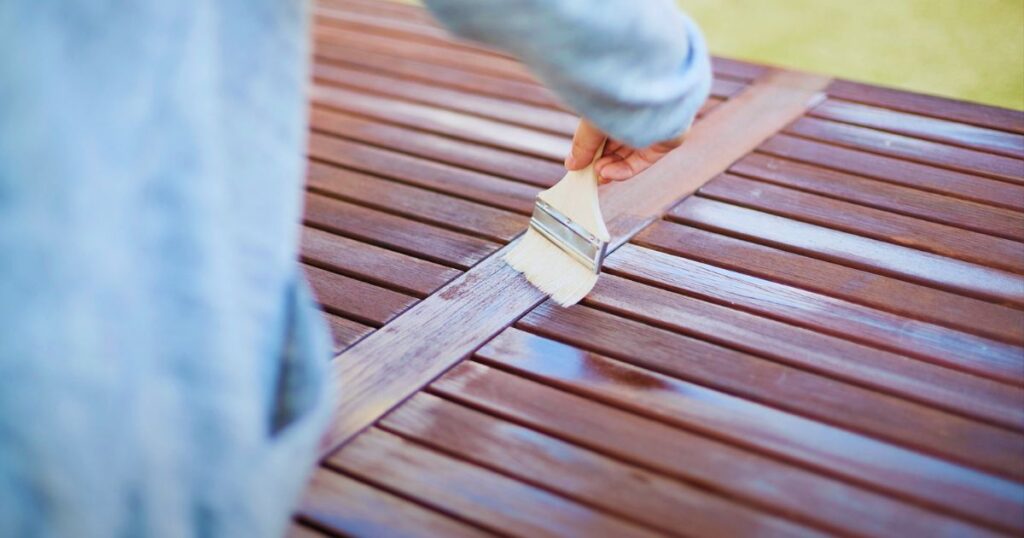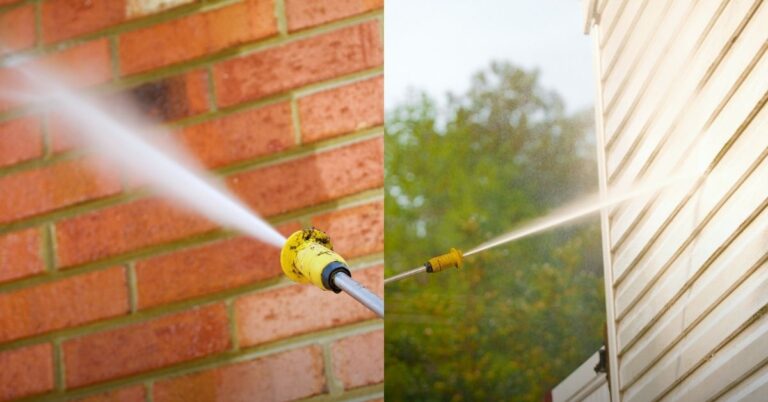A clean deck makes all the difference in how your outdoor space looks and feels. But if you have a composite deck, you can’t just grab any cleaner off the shelf. Harsh chemicals can strip away the finish, leaving your deck looking dull and worn out. That’s where vinegar and baking soda come in—simple, natural, and surprisingly powerful.
Think about it: You wouldn’t wash your favorite shirt with bleach if it didn’t need it. Your composite deck is no different. Using vinegar and baking soda is like giving your deck a gentle yet effective deep clean without the damage. Vinegar breaks down dirt and mildew, while baking soda lifts stains without scratching the surface. Together, they’re a budget-friendly, eco-friendly solution that keeps your deck looking fresh all year long.
But how do you use them the right way? How much vinegar should you mix? Does baking soda really help with tough stains? Let’s break it down step by step so you can clean your deck the safe, easy way—without any guesswork.
Table of Contents
Why Choose Vinegar and Baking Soda for Cleaning Composite Decking?
Your composite deck deserves a cleaner that’s tough on grime but gentle on its surface. Many store-bought cleaners contain harsh chemicals that can fade color, weaken the material, and even leave behind residue that attracts more dirt. That’s why vinegar and baking soda make the perfect pair—natural, effective, and safe for both your deck and the environment.
Now here comes the good part—let’s look at how these everyday ingredients do the job better than most commercial cleaners.
The Benefits of Vinegar for Deck Cleaning
White vinegar is more than just a kitchen staple—it’s one of the best natural cleaners out there.
- Kills mold and mildew naturally – Composite decking can trap moisture, making it a breeding ground for mold and mildew. Vinegar cuts through and removes these growths without damaging the surface.
- Breaks down grease and grime – Spilled food, BBQ drippings, and dirt from foot traffic can leave behind greasy spots. Vinegar’s acidity lifts stubborn stains, leaving the deck clean without scrubbing too hard.
- Neutralizes odors – If your deck smells musty after a rainy season, vinegar helps eliminate those lingering odors instead of just masking them.
- Safe for composite decking – Unlike bleach, which can strip color and weaken the material, vinegar is gentle and won’t cause damage over time.
But I didn’t stop there—vinegar alone is great, but baking soda takes cleaning up a notch.
Why Baking Soda is a Great Cleaning Agent
Baking soda isn’t just for baking—it’s a powerhouse for tackling deck stains and grime.
- Lifts stains without scratching – Unlike rough scrubbers or chemical cleaners, baking soda has a soft grit that scrubs away stains without harming the deck’s surface.
- Absorbs odors and neutralizes acidity – Vinegar’s acidity cuts through grime, but baking soda balances it out, leaving your deck fresh and residue-free.
- Safe for people, pets, and plants – Since baking soda is non-toxic, you don’t have to worry about harming your garden, pets, or kids playing barefoot on the deck.
Together, vinegar and baking soda create a simple but powerful cleaning combo. But that’s not all—let’s talk about why they’re better than commercial cleaners.
The Eco-Friendly Advantage Over Commercial Cleaners
Many store-bought deck cleaners contain strong chemicals that might get the job done fast, but come with long-term downsides.
- No toxic chemicals – Some cleaners leave behind residues that wear down composite decking over time. Vinegar and baking soda clean effectively without causing damage.
- Budget-friendly and always available – You probably already have vinegar and baking soda in your kitchen. No need to spend extra money on specialty products when these do the job just as well.
- Environmentally safe – Unlike chemical-based cleaners that can wash into your lawn or garden, vinegar and baking soda break down naturally without harming plants or wildlife.
So, why use expensive, chemical-heavy cleaners when you have two simple, safe, and effective ingredients right at home?
Step-by-Step Guide: Cleaning a Composite Deck with Vinegar and Baking Soda
Now that you know why vinegar and baking soda work so well, it’s time to put them to use. Follow these simple steps to deep clean your composite deck without damaging it.

Tools & Equipment You’ll Need:
- White vinegar (distilled)
- Baking soda
- Warm water
- Soft-bristle brush or deck brush
- Microfiber mop or soft cloth
- Bucket & spray bottle
- Garden hose or low-pressure washer
Step 1: Clear and Sweep the Deck
Before you start cleaning, remove furniture, rugs, or potted plants to get full access to the deck. Sweep away dirt, leaves, and loose debris to prevent scratching while scrubbing.
Step 2: Mix the Vinegar Cleaning Solution
In a bucket, mix one part white vinegar with one part warm water. For extra cleaning power, add a few drops of dish soap. Pour the solution into a spray bottle for easy application.
Step 3: Apply the Vinegar Solution & Let It Sit
Spray or pour the vinegar solution over the deck, covering all areas evenly. Let it sit for 10–15 minutes to break down dirt, mold, and mildew. Avoid letting it dry completely to prevent streaking.
Step 4: Scrub Gently with a Soft Brush
Use a soft-bristle brush or deck brush to scrub the surface. Focus on high-traffic areas and spots with visible stains or grime. Scrub in the direction of the deck boards to avoid damage.
Step 5: Use Baking Soda for Tough Stains
For stubborn stains, make a paste by mixing baking soda with a little water. Apply it directly to stains and scrub gently in circular motions. Let it sit for 10 minutes before rinsing.
Step 6: Rinse Thoroughly
Use a garden hose or low-pressure washer to rinse off the vinegar and baking soda residue. Ensure all cleaning solution is washed away to prevent streaking or buildup.
Step 7: Let the Deck Air Dry
Allow the deck to air dry completely before placing furniture back. Avoid walking on the deck while it’s wet to prevent footprints and streaks.
Bonus Tip: Keep Your Deck Cleaner Longer!
✔ Sweep regularly to prevent dirt buildup.
✔ Clean spills immediately to avoid stains.
✔ Rinse the deck with water once a week to remove dust.
By following these seven easy steps, your composite deck will stay fresh, clean, and looking brand new—without the use of harsh chemicals!
Preventative Maintenance to Keep Your Composite Deck Clean
A clean deck isn’t just about scrubbing away dirt—it’s about keeping it from building up in the first place. Regular maintenance saves time, keeps your deck looking new, and prevents damage that can shorten its lifespan. The good news? It’s easier than you think. Follow these simple habits to keep your composite deck in top shape year-round.

1. Sweep and Rinse Regularly
Leaves, dirt, and dust may seem harmless, but if left too long, they can cause stains or create a slippery surface. Sweep your deck at least once a week to prevent buildup. If you live in an area with a lot of trees, a quick sweep every few days will keep things under control.
After sweeping, give your deck a light rinse with a garden hose to wash away fine dust and pollen. A little effort now saves you from deep scrubbing later.
2. Clean Up Spills Right Away
Barbecue sauce, wine, and grease from outdoor cooking can stain if left too long. Wipe up spills immediately using a damp cloth and warm, soapy water. If a stain starts setting in, a little baking soda can lift it before it becomes a bigger problem.
3. Watch for Mold and Mildew
Composite decking resists mold better than wood, but it’s not immune, especially in shaded or damp areas. Check for mold or mildew every few weeks, especially after rain. If you see any dark spots, clean them with a vinegar solution before they spread.
4. Avoid Harsh Chemicals and High-Pressure Washers
Bleach, ammonia, and strong solvents might seem like quick fixes, but they can strip the protective coating and fade the color of your deck. Stick to gentle cleaners like vinegar and baking soda.
As for pressure washers, they can force water into the deck boards, leading to moisture issues. If you must use one, keep the pressure low and hold the nozzle at least 12 inches away from the surface.
5. Move Furniture and Rugs Occasionally
Leaving patio furniture, planters, and outdoor rugs in the same spot all year can cause uneven fading and trap moisture. Every few weeks, move them around slightly to let the deck breathe. This simple habit helps prevent discoloration and mold growth underneath.
6. Do a Seasonal Deep Clean
A little extra care at the start of each season goes a long way. Give your deck a full cleaning every 3–6 months using vinegar and baking soda to remove any grime that has built up over time. If you live in a wet or humid area, a mid-season refresh will keep mold and mildew in check.
7. Check Gaps and Drainage
Water pooling between deck boards can lead to long-term damage. Make sure the gaps between boards stay clear by removing leaves and debris that might block drainage. If water isn’t flowing off your deck properly, a quick cleaning can fix the problem before it causes bigger issues.
Keep Your Deck Looking New with Minimal Effort
Preventing dirt and stains takes far less effort than scrubbing them out later. A few simple habits—like sweeping, rinsing, and checking for mold—will keep your composite deck looking fresh for years. Stick to this routine, and you’ll spend more time enjoying your deck instead of cleaning it.
Conclusion: Keep Your Deck Clean the Easy Way
Keeping your composite deck clean doesn’t have to be complicated. With vinegar, baking soda, and a few simple habits, you can prevent buildup, remove stains, and keep it looking great without harsh chemicals.
A quick sweep, rinse, and occasional deep clean go a long way in maintaining its appearance. By handling spills fast and keeping mold in check, you’ll spend less time scrubbing and more time enjoying your outdoor space.
Stick to this routine, and your deck will stay fresh, clean, and ready for every season.





